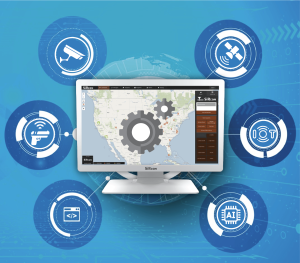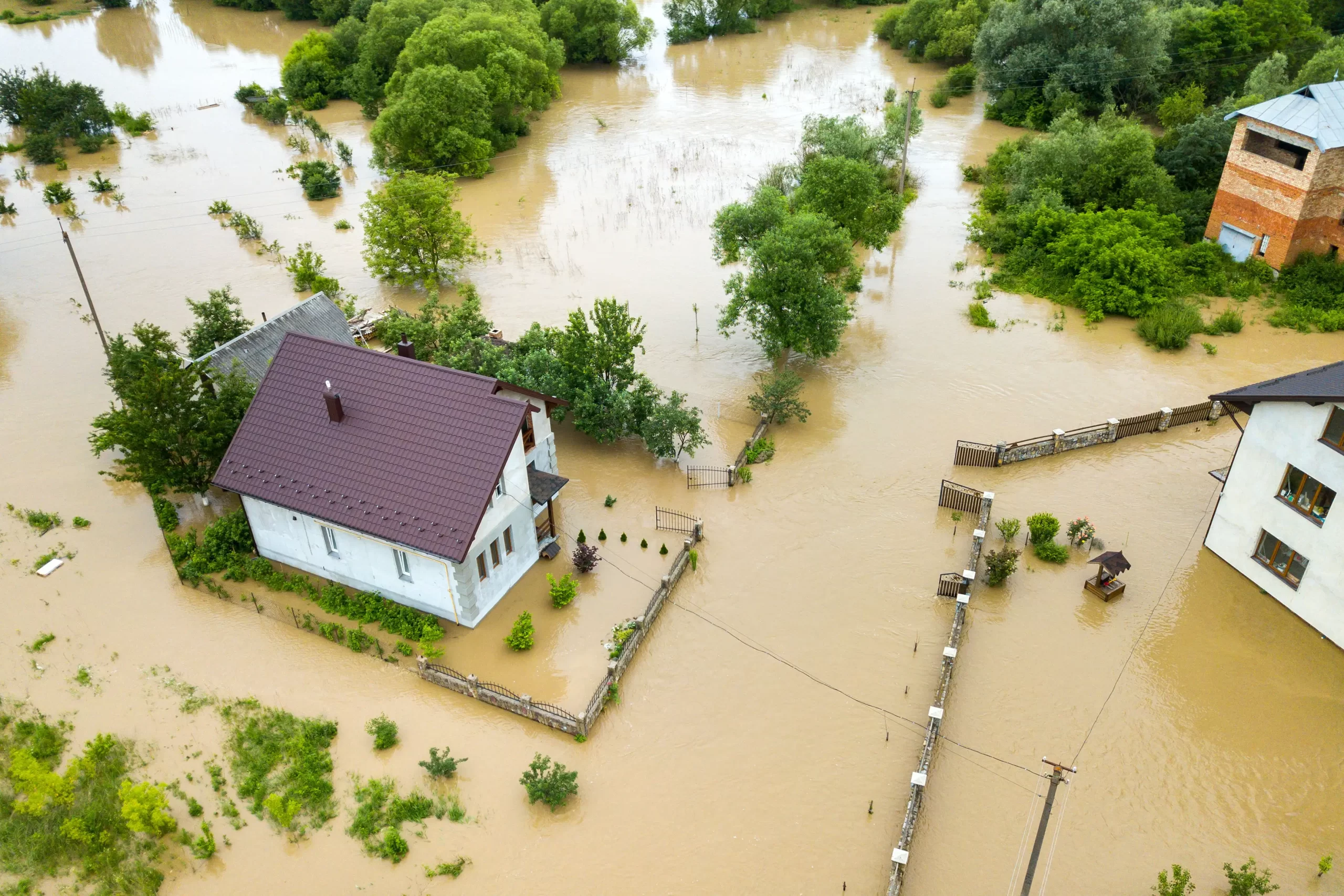Lights Out, Waters High: California Faces the Fury of Atmospheric Rivers
In the Heart of the Tempest: California’s Unyielding Battle Against Nature’s Wrath:
In the embrace of its breathtaking landscapes, California stands as a monument to nature’s paradoxical beauty and ferocity. From the serene Pacific Coast to the majestic Sierra Nevada, the state’s diverse terrain is a testament to both its splendor and its susceptibility. Here, the forces of nature do not merely whisper; they roar, unleashing wildfires, earthquakes, floods, and storms that test the very soul of the Golden State and its inhabitants. As the horizon darkens once more, California finds itself on the precipice of another formidable storm, a harbinger of floods and mudslides that underscores the escalating siege of weather challenges in an era of climate upheaval.
The impact of these relentless natural forces is profound, often leading to widespread power outages that plunge homes into darkness, halt businesses, and strain emergency services to their limits in moments when time is especially crucial. The recent storm, as reported by Reuters, underscores a recurring theme of vulnerability, where the might of nature meets the fragility of man-made systems. Power outages disrupt not just the physical infrastructure but the very fabric of emergency response and communication, leaving communities isolated and in peril. The absence of power in critical moments hampers rescue and relief efforts, complicates medical services, and obscures the flow of vital information, exacerbating the chaos unleashed by the storm.
Amidst this chaos lies an urgent call for innovation—a plea for robust and reliable disaster management solutions that transcend the current paradigm. California’s plight is not just a tale of survival against the elements; it is a clarion call to reimagine our stance on resilience, to forge systems that not only endure the initial fury but persist, keeping the lifelines of emergency services and community awareness intact. This quest transcends mere response; it is a journey towards redefining our resilience in the face of nature’s increasing ferocity.
As the storm clouds gather, a profound message resonates through the tempest: the old ways of disaster management can no longer shield us. California’s relentless weather challenges beckon for a new era of solutions—innovations as dynamic and resilient as the threats they seek to mitigate. This moment is a rallying cry for innovators, policymakers, and communities to unite, to weave strategies of preparedness that are proactive, ensuring that when the storm descends, California stands not just as a survivor, but as a beacon of preparedness, resilience, and hope.
In the heart of the tempest, we find our strength, our resolve to rise above the darkness. Join us on this journey, as we navigate the storm together, forging a future where, even in the face of nature’s wrath, we remain unbroken, illuminated by the promise of innovation and the enduring spirit of California.

Analyzing the Recent Storm and Its Aftermath:
California recently faced the wrath of an atmospheric river, a formidable force of nature that tested the resilience of the state and its people. This phenomenon, essentially a massive stream of moisture flowing from the Pacific, unleashed torrents of rain across the state, overwhelming communities and exposing the frailties of an infrastructure ill-equipped for such severe weather events. The aftermath presented a grim reality: power outages across the state, leaving over 800,000 residents in a staggering blackout, as highlighted by CNN. This disruption transformed vibrant cities into eerie ghost towns and stripped homes of essential modern comforts, underlining the profound impact of the storm.
The widespread and enduring power outages severed critical lines of communication and coordination, challenging the foundation of emergency response and community safety. Emergency services, already stretched thin, faced monumental hurdles in reaching those in dire need, assessing the widespread damage, and deploying necessary resources effectively. The blackout created vast information voids, leaving residents in the dark about evacuation protocols, shelter locations, and the ongoing status of the storm. In an era defined by the immediacy of digital communication, the irony couldn’t be starker: our reliance on technology, meant to connect us, left us more isolated than ever in the face of a failing power grid.
This calamity has starkly highlighted the urgent necessity for disaster management systems that remain functional independent of the electrical grid. The critical failure to maintain effective communication during power outages not only hampers timely response efforts but also elevates the risk to both life and property. It underscores a significant oversight in our current approach to disaster preparedness: the need for durable, resilient systems designed to endure the initial brunt of disasters and sustain operations, ensuring that emergency services can continue and communities remain informed.
As California begins the arduous process of recovery, the focus shifts towards the horizon, pondering the blueprint for a future that can withstand the capriciousness of nature. The solution rests in the realm of innovation, in transcending traditional methodologies to embrace technologies and strategies that guarantee uninterrupted communication and coordination, even amidst the darkest times. The lessons gleaned from this devastating storm are invaluable, teaching us the importance of resilience, the imperative of readiness, and the critical need for a proactive stance in disaster management.
The road ahead is unequivocal. We are compelled to fortify our infrastructure, making it not only resilient but also flexible enough to adapt to the evolving challenges posed by climate change. Technology must be harnessed not as a mere convenience but as a vital instrument of empowerment, ensuring that when the next atmospheric onslaught descends, we stand ready, not as victims in the dark but as a community illuminated by the strength of our innovations. The recent storm, with its deluge and the consequential blackout affecting over 800,000 individuals, serves as a potent reminder of nature’s might and our own vulnerabilities. Yet, it also acts as a clarion call—a call to innovate, adapt, and emerge more robust in the face of nature’s relentless tests.

The Role of Technology in Disaster Preparedness and Response:
In the face of escalating natural disasters, technology has emerged as a beacon of hope, offering innovative solutions to enhance disaster preparedness and response. The evolution of technology in disaster management, particularly through the lenses of Government Technology (GovTech), Artificial Intelligence (AI), and machine learning, has significantly transformed how communities and governments anticipate, manage, and recover from catastrophic events. Yet, despite these advancements, the Achilles’ heel of technological reliance becomes glaringly apparent during power outages, revealing critical gaps that must be addressed to ensure resilience and effectiveness in disaster response.
The Evolution of Technology in Disaster Management:
The journey of technology in disaster management has been marked by continuous innovation, from early warning systems to sophisticated data analytics platforms. GovTech initiatives have played a pivotal role in this evolution, leveraging technology to enhance public sector services, including disaster response mechanisms. These initiatives have facilitated the development of integrated communication networks, real-time data sharing platforms, and comprehensive disaster management applications, all designed to streamline response efforts and improve situational awareness.
Artificial Intelligence and machine learning, with their ability to process vast amounts of data, analyze patterns, and generate predictive insights, have further revolutionized disaster preparedness. Machine learning algorithms can sift through weather patterns, historical disaster data, and real-time reports to predict the likelihood of natural disasters with remarkable accuracy. This predictive capability, enhanced by machine learning’s continuous learning process, allows for more effective early warning systems, targeted evacuation plans, and the strategic pre-positioning of resources, significantly mitigating the impact of disasters on vulnerable communities.
The Role of GovTech, AI, and Machine Learning in Improving Preparedness and Response:
GovTech, AI, and machine learning have synergistically enhanced disaster response strategies. Machine learning-powered drones provide aerial surveillance to assess damage, identify stranded individuals, and map safe evacuation routes. Similarly, machine learning-driven social media analysis tools monitor real-time public sentiment and emergency requests, enabling responders to prioritize resources and efforts efficiently. GovTech initiatives have facilitated the deployment of these technologies, ensuring that they are integrated into public safety protocols and supported by the necessary infrastructure and policy frameworks.
Moreover, the advent of smart cities, underpinned by GovTech innovations and enriched with machine learning algorithms, has introduced a new dimension to disaster response. Smart sensors and IoT devices distributed throughout urban areas can detect early signs of natural disasters. When integrated with machine learning analytics, these systems can trigger automatic alerts to both citizens and emergency services, enhancing the speed and efficiency of the response.

Identifying Gaps During Power Outages:
Despite these technological strides, power outages remain a formidable challenge, exposing significant gaps in current disaster management solutions. Most advanced technologies, including those powered by AI and machine learning, depend on a reliable power supply and internet connectivity to function. When power outages occur, especially during severe natural disasters, this dependency becomes a critical vulnerability. Communication networks can fail, data centers may go offline, and essential services provided by GovTech solutions become inaccessible, leaving communities isolated and emergency responders without the tools they need.
Moving Forward: Bridging the Gaps with Machine Learning:
To bridge these gaps, the future of disaster management technology must focus on resilience and redundancy, incorporating machine learning into power-independent solutions. Developing systems that can operate autonomously, with alternative power sources such as solar energy or battery backups, is crucial. Machine learning enhances the efficiency of these systems, enabling them to adapt to changing conditions and prioritize actions based on real-time data, even during power outages.
The role of GovTech in this context is to facilitate the adoption and integration of these resilient technologies into public disaster management strategies. By fostering partnerships between technology providers, government agencies, and communities, GovTech can ensure that the benefits of AI, machine learning, and other innovations are fully leveraged to protect and serve the public in times of crisis.
In conclusion, while technology, including AI and machine learning, has significantly advanced disaster preparedness and response, the challenge of power outages highlights the need for continued innovation. By addressing these gaps with resilient, power-independent solutions, and by harnessing the potential of GovTech, AI, and machine learning, we can build a future where technology not only predicts and responds to natural disasters but also withstands the very conditions that accompany them, ensuring no one is left in the dark when disaster strikes.
Introduction to High-Quality Enterprises (HQE) and Its Innovations:
High-Quality Enterprises (HQE) stands at the forefront of integrating cutting-edge technologies to address the critical challenges of disaster management and emergency response. With a steadfast commitment to leveraging Government Technology (GovTech) and Artificial Intelligence (AI), HQE is pioneering the development of advanced solutions designed to enhance preparedness, response, and recovery in the face of natural disasters. Recognizing the pivotal role of technology in safeguarding communities and infrastructure, HQE’s innovations are tailored to meet the evolving demands of disaster resilience and public safety.
At the core of HQE’s mission is the development of resilient systems capable of operating independently of traditional grid power. This focus is driven by the understanding that power outages often accompany the very disasters from which protection is most needed. By designing solutions that maintain functionality amidst power failures, HQE addresses a critical gap in current disaster response capabilities. These systems ensure continuous communication, real-time data analysis, and the delivery of essential services when they are most crucial, thereby significantly mitigating the impact of disasters on affected populations.
HQE’s approach combines the robust analytical capabilities of AI with the practical demands of GovTech, resulting in solutions that not only predict and respond to emergencies but also remain operational in the most challenging conditions. This dual focus on innovation and resilience reflects HQE’s dedication to advancing disaster management technology, making it a key player in the quest for a safer, more prepared society. Through its pioneering work, HQE exemplifies the potential of technology to transform disaster response, embodying the future of emergency management in an increasingly unpredictable world.

HQE’s Mass Notification Systems: Operational Resilience During Power Outages:
High-Quality Enterprises (HQE) stands at the forefront of integrating cutting-edge technologies to address the critical challenges of disaster management and emergency response. With a steadfast commitment to leveraging Government Technology (GovTech), Artificial Intelligence (AI), and the nuanced capabilities of Machine Learning, HQE is pioneering the development of advanced solutions designed to enhance preparedness, response, and recovery in the face of natural disasters. Recognizing the pivotal role of technology in safeguarding communities and infrastructure, HQE’s innovations are tailored to meet the evolving demands of disaster resilience and public safety.
Design for Resilience:
At the core of HQE’s mission is the development of resilient systems capable of operating independently of traditional grid power. This focus is driven by the understanding that power outages often accompany the very disasters from which protection is most needed. By designing solutions that maintain functionality amidst power failures, HQE addresses a critical gap in current disaster response capabilities. These systems ensure continuous communication, real-time data analysis, and the delivery of essential services when they are most crucial, thereby significantly mitigating the impact of disasters on affected populations.
Intelligent Energy Management and Predictive Maintenance:
The integration of Artificial Intelligence (AI) within HQE’s mass notification systems marks a significant advancement in emergency communication technology. AI plays a crucial role in intelligent energy management, optimizing the use of stored power during outages to extend operational capabilities. Through predictive analytics, the AI can forecast energy consumption based on usage patterns and adjust system settings to conserve power without compromising the system’s effectiveness.
Predictive maintenance is another critical feature enabled by AI, ensuring system readiness at all times. By analyzing data from the system’s components, AI can identify potential issues before they lead to failure, scheduling maintenance to prevent downtime. This proactive approach to maintenance is vital for maintaining the reliability of the mass notification systems, especially in the lead-up to and during natural disasters.
Autonomous Decision-Making for Optimized Communication:
AI also empowers HQE’s systems with autonomous decision-making capabilities, enabling them to optimize communication during emergencies. In situations where conventional communication infrastructures are compromised, the systems can autonomously reroute messages through alternative channels, ensuring that critical alerts reach the intended recipients. This capability is crucial for disseminating evacuation orders, safety instructions, and updates on disaster response efforts to the public and between emergency services.

Real-World Effectiveness:
The effectiveness of HQE’s mass notification systems in real-world disaster situations is best illustrated through hypothetical scenarios. Imagine a severe hurricane approaching a coastal community, with the power grid knocked out hours before the storm’s landfall. Despite the blackout, HQE’s mass notification system, powered by its integrated solar panels and battery backups, continues to operate seamlessly. It sends out timely alerts about the hurricane’s trajectory, evacuation orders, and safety instructions to residents’ mobile devices and local emergency services, facilitating a coordinated and efficient evacuation process.
In another scenario, following a major earthquake that disrupts power and communication lines, HQE’s system autonomously switches to alternative communication channels, broadcasting critical information to first responders and the public. This ensures that despite the widespread infrastructure damage, essential communication remains uninterrupted, aiding in rescue and recovery efforts.
These scenarios underscore the operational integrity and reliability of HQE’s mass notification systems during and after power outages, showcasing their potential to significantly enhance disaster response and public safety in the face of increasingly unpredictable natural disasters. Through its innovative use of alternative energy, AI integration, and autonomous communication capabilities, HQE is setting a new standard for disaster preparedness and response technology.
The Future of Disaster Management with HQE: Leveraging GovTech and AI:
The future of disaster management is on the cusp of a transformative shift, with High-Quality Enterprises (HQE) leading the charge through the integration of AI-powered, power-independent solutions. These innovations represent a significant leap forward in our ability to enhance public safety and disaster resilience, particularly within the framework of Government Technology (GovTech) initiatives. By harnessing the capabilities of artificial intelligence and ensuring operational independence from traditional power sources, HQE is setting a new benchmark for emergency response strategies.
The integration of HQE’s technologies within GovTech initiatives opens up unprecedented opportunities to improve disaster preparedness and response. AI’s predictive analytics can forecast disaster impacts with greater accuracy, enabling preemptive measures that can save lives and reduce economic losses. Moreover, the power-independent nature of HQE’s solutions ensures that, even in the face of severe power outages, critical communications and services remain uninterrupted. This reliability is crucial for maintaining situational awareness and coordinating emergency response efforts effectively.
The transformative potential of these technologies cannot be overstated. They promise not only to enhance the efficiency and effectiveness of disaster response but also to fundamentally change the way communities prepare for and recover from disasters. However, realizing this potential requires a collaborative approach that transcends traditional boundaries. Government agencies, technology companies like HQE, and communities must come together to foster innovation and implement these solutions.
This call to action is not just about adopting new technologies; it’s about building a safer, more resilient future for all. By embracing the possibilities offered by HQE’s AI-powered, power-independent solutions, we can create a disaster management ecosystem that is proactive, responsive, and resilient. The time to act is now, with the promise of a future where technology empowers us to face disasters with confidence and resilience.
HQE Systems is a certified Veteran Owned Company. For more information about HQE Systems Inc. and its emergency management, electronic security, and integration solutions, please visit www.hqesystems.com.

Contact: David Ditto (Early Warning Systems Subject Matter Expert)
Email: David.Ditto@hqesystems.com
Phone Number: (843) 872-7020
____________________
HQE Systems, Inc. | HQE is a Minority-Owned Service Disabled Veteran Owned Small Business (SDVOSB) providing full solutions for: Mass Notification Systems, Electronic Security Systems, Software Development Services, Contract Support, and Prototyping Services. As a brand-agnostic solutions provider, HQE prides itself in providing the BEST solution for the project. HQE possesses over 30+ factory certifications and reseller licenses to ensure our clients receive the highest quality service at the ideal budget. HQE can provide full design, installation, integrations, upgrades, and long-term maintenance support for any size and scope project.


